SiriusXM Connected Vehicle Blog
Consumer Trend Becomes Reality: Post-Pandemic Purchasing Habits and the Future of eCommerce
On March 11, 2020, life as we knew it came screeching to a halt when the World Health Organization declared COVID-19 a global pandemic. With that announcement came the near-instant shutdown of nearly every type of business, from manufacturing to travel, hospitality to retail.
 Immediately, consumers were forced to rethink everything they had previously known about how and where to shop - not just for select items, but for everything they needed to keep their households running, families fed and more.
Immediately, consumers were forced to rethink everything they had previously known about how and where to shop - not just for select items, but for everything they needed to keep their households running, families fed and more.
Prior to the lockdowns, ordinary activities like going to a mall, visiting a car dealership or taking a trip to the grocery store were completed without second thought. Amid the pandemic, consumers were faced with deciding whether these tasks outside of the home were worth risking exposure to the virus. Now as more and more consumers get vaccinated and with pandemic restrictions loosening up, we are starting to see that many consumers actually prefer the newly discovered convenience of eCommerce with contactless pick-up or home delivery.
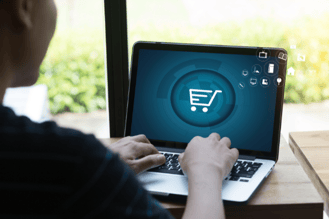
According to a Wall Street Journal article, consumers find it much easier and convenient to just grab the things they need without having to spend a lot of time in store. Wall Street Journal, March 2021.
McKinsey & Company conducted a comprehensive survey one month into the pandemic on how US shopping behavior had changed, reporting that 75 percent of consumers have tried new shopping methods.
While online shopping penetration went down during the second half of 2020, it has remained at a higher level than before COVID-19, with online penetration in January at 48 percent. Convenience and value have been the main drivers of shopping behavior, so it is no surprise consumers intend to continue with many digital behaviors even after COVID-19 subsides, including restaurant curbside pickup or use of digital health-and-wellness.
Now crossing over the one-year mark since the beginning of the pandemic, eCommerce has reached levels which were not projected to be reached until 2025, and consumers’ reliance on digital shopping shows no signs of slowing down. According to ROI Revolution, eCommerce revenue is now estimated to surpass $843 billion in sales for 2021.
Despite millions of people getting vaccinated each day and many offices, shops, and restaurants reopening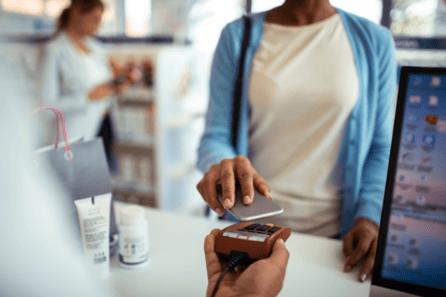 for in-person business, consumers are still placing a high value on safety and convenience in the form of contactless and mobile payment experiences and online shopping. INMAR Intelligence recently reported in November 2020 that 85 percent of consumers still think it’s important for retailers to offer contactless payment options, with 28 percent of consumers stating that they would avoid a retailer altogether if contactless payment wasn’t an option. This sentiment highlights the lasting demand for merchants to remain agile, adaptive and flexible in how they offer their goods and services to consumers in this new era of commerce.
for in-person business, consumers are still placing a high value on safety and convenience in the form of contactless and mobile payment experiences and online shopping. INMAR Intelligence recently reported in November 2020 that 85 percent of consumers still think it’s important for retailers to offer contactless payment options, with 28 percent of consumers stating that they would avoid a retailer altogether if contactless payment wasn’t an option. This sentiment highlights the lasting demand for merchants to remain agile, adaptive and flexible in how they offer their goods and services to consumers in this new era of commerce.
While the SiriusXM Connected Vehicle eCommerce platform has been developed to facilitate a convenient, secure and seamless experience for users to find and purchase services that are relevant in-vehicle, it also has other inherent benefits in the post-COVID world, including:
- Decreased contact with commonly touched surfaces
- Reduced need to be in shared spaces
- Full capabilities to complete transactions with minimal/no human interaction
We’ll elaborate more on these in future postings, but on top of these social distancing benefits our eCommerce platform can make everyday tasks easier, such as:
-
- Getting hungry?
- During a trip, our eCommerce platform can use a driver created profile to help locate preferred restaurants nearby. The driver can place orders through the vehicle and make payments from the vehicle through the eWallet.
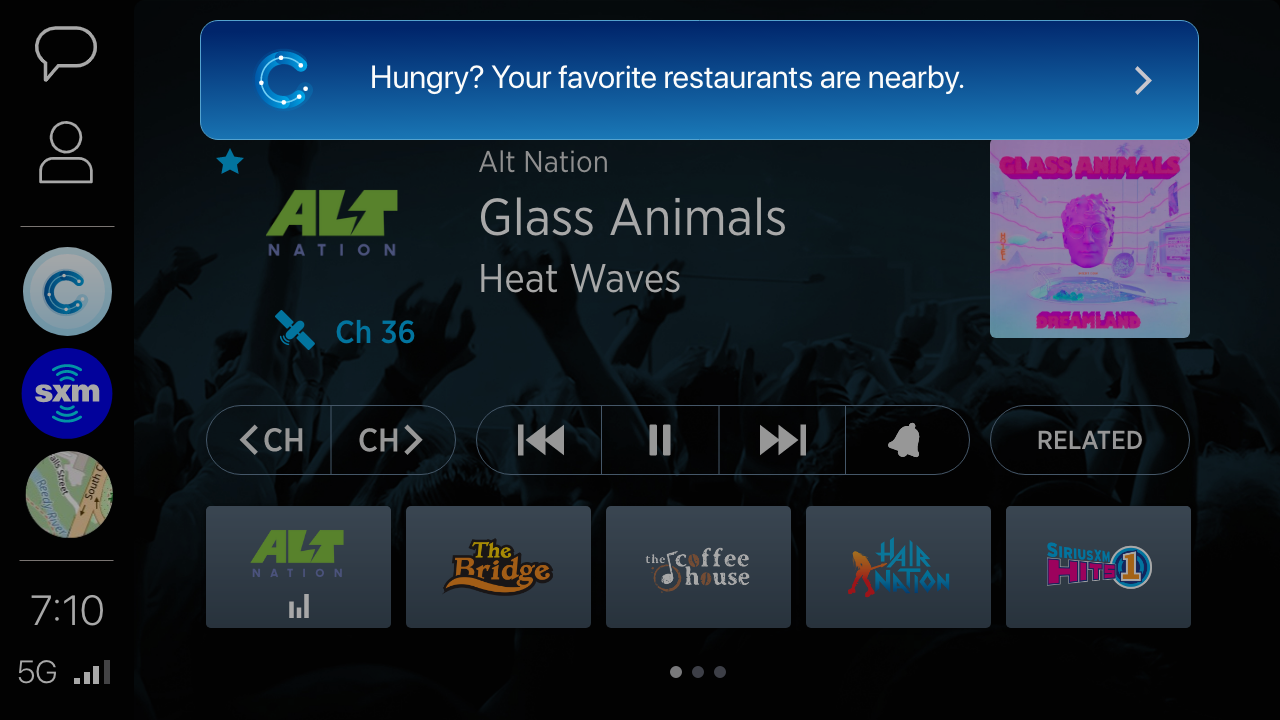
- During a trip, our eCommerce platform can use a driver created profile to help locate preferred restaurants nearby. The driver can place orders through the vehicle and make payments from the vehicle through the eWallet.
- Low on fuel?
- Finding a preferred gas station on the go can be a difficult task – SiriusXM Connected Vehicle’s eCommerce platform simplifies the task by not only locating the stations but enabling a purchase from the vehicle. This ultimately eliminates the need to pull out your credit card and swipe at the pump, which helps reduce risk of credit card skimming at the pump.
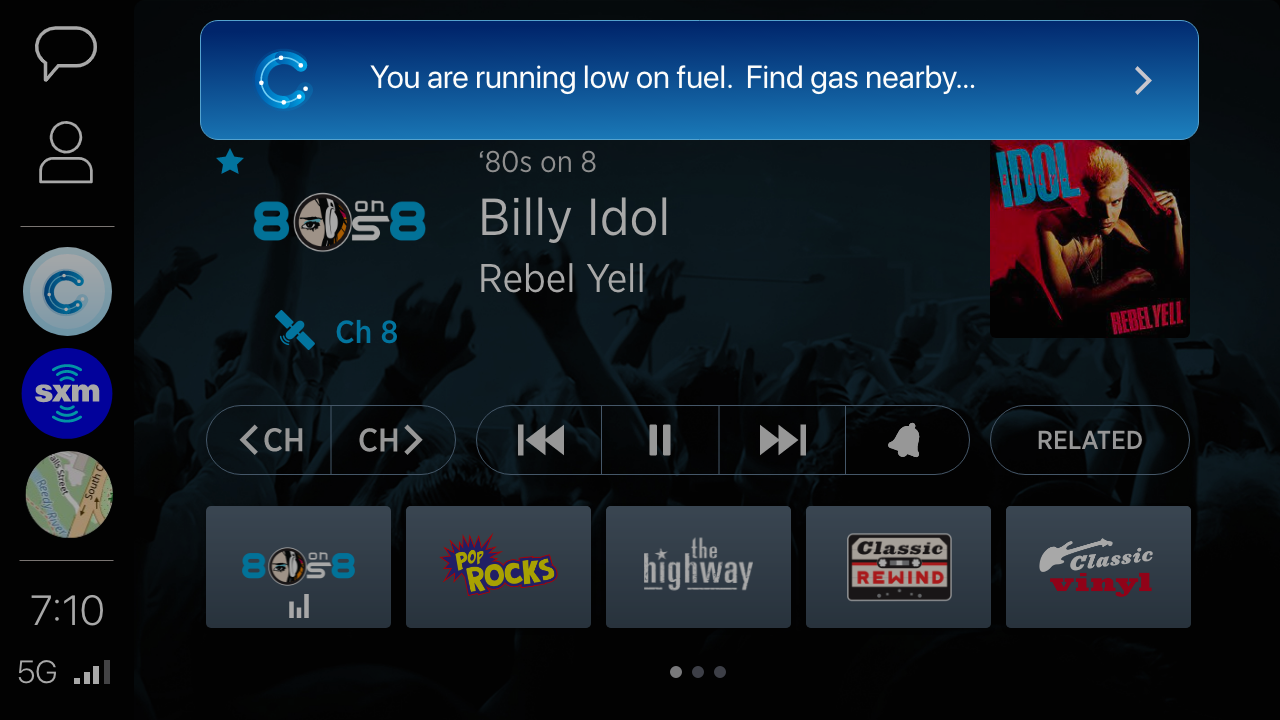
- Finding a preferred gas station on the go can be a difficult task – SiriusXM Connected Vehicle’s eCommerce platform simplifies the task by not only locating the stations but enabling a purchase from the vehicle. This ultimately eliminates the need to pull out your credit card and swipe at the pump, which helps reduce risk of credit card skimming at the pump.
- Where can I park?
- Drivers can find, reserve and pay for parking without leaving their vehicle. As sporting events and concerts resume this can be especially helpful to avoid wasting time searching for that one remaining garage. Drivers can also be alerted when prepaid parking will expire and remotely extend the reserved time.
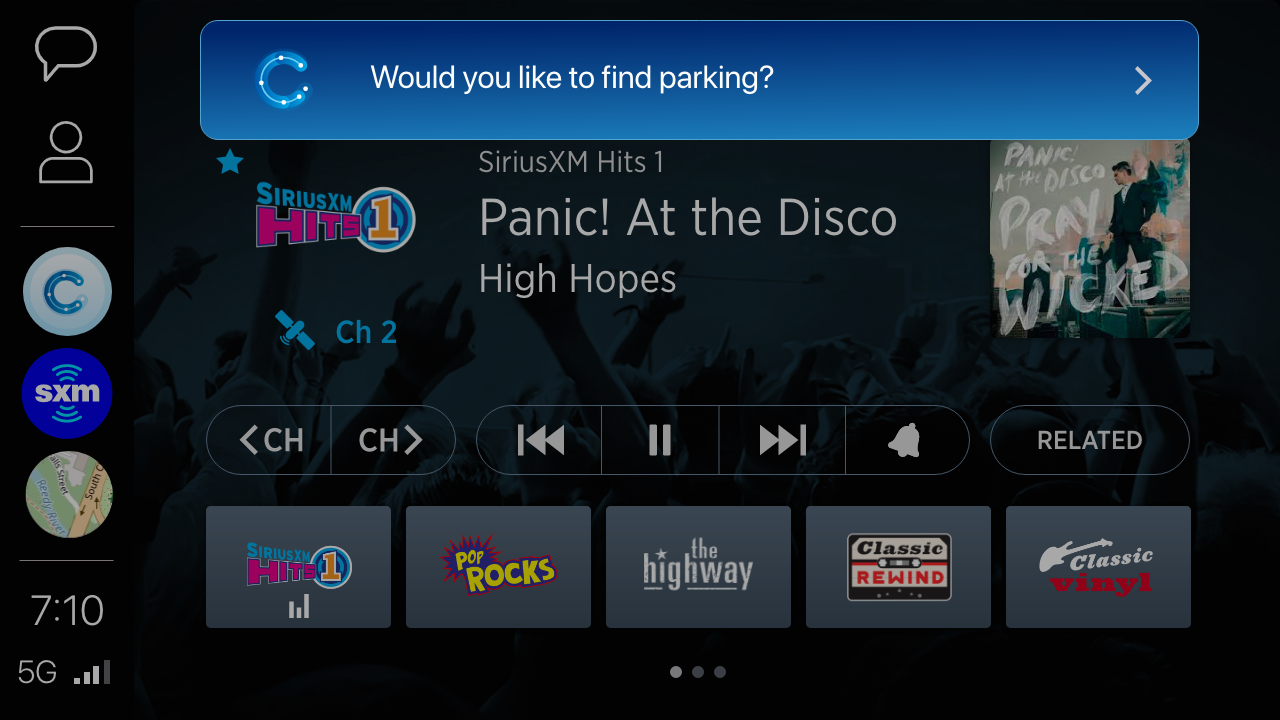
- Drivers can find, reserve and pay for parking without leaving their vehicle. As sporting events and concerts resume this can be especially helpful to avoid wasting time searching for that one remaining garage. Drivers can also be alerted when prepaid parking will expire and remotely extend the reserved time.
- How do I make paying for tolling easier?
- We provide a streamlined all-electronic payment experience at toll roads and bridges. Our platform utilizes a GPS toll recognition technology algorithm that eliminates the need for transponders and immediately notifies drivers of each cost. Gone are the days where a driver must wait for that end of month invoice, reviewing tolls long forgotten.
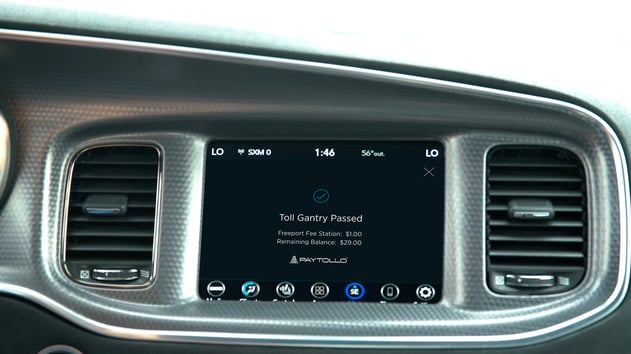
- We provide a streamlined all-electronic payment experience at toll roads and bridges. Our platform utilizes a GPS toll recognition technology algorithm that eliminates the need for transponders and immediately notifies drivers of each cost. Gone are the days where a driver must wait for that end of month invoice, reviewing tolls long forgotten.
- Getting hungry?
The widespread acceptance of eCommerce – by people of all ages – combined with rapid advances in mobile connectivity creates unlimited opportunities for new technology and innovation for mobile shopping, convenience, and safety.
Contact Us to learn about all the ways we can make in-vehicle commerce work for you.
Disclosure: Studies referenced above are for informational purposes only; and references do not constitute an endorsement or an approval by such entities of any of the products or services of SiriusXM Connected Vehicle.